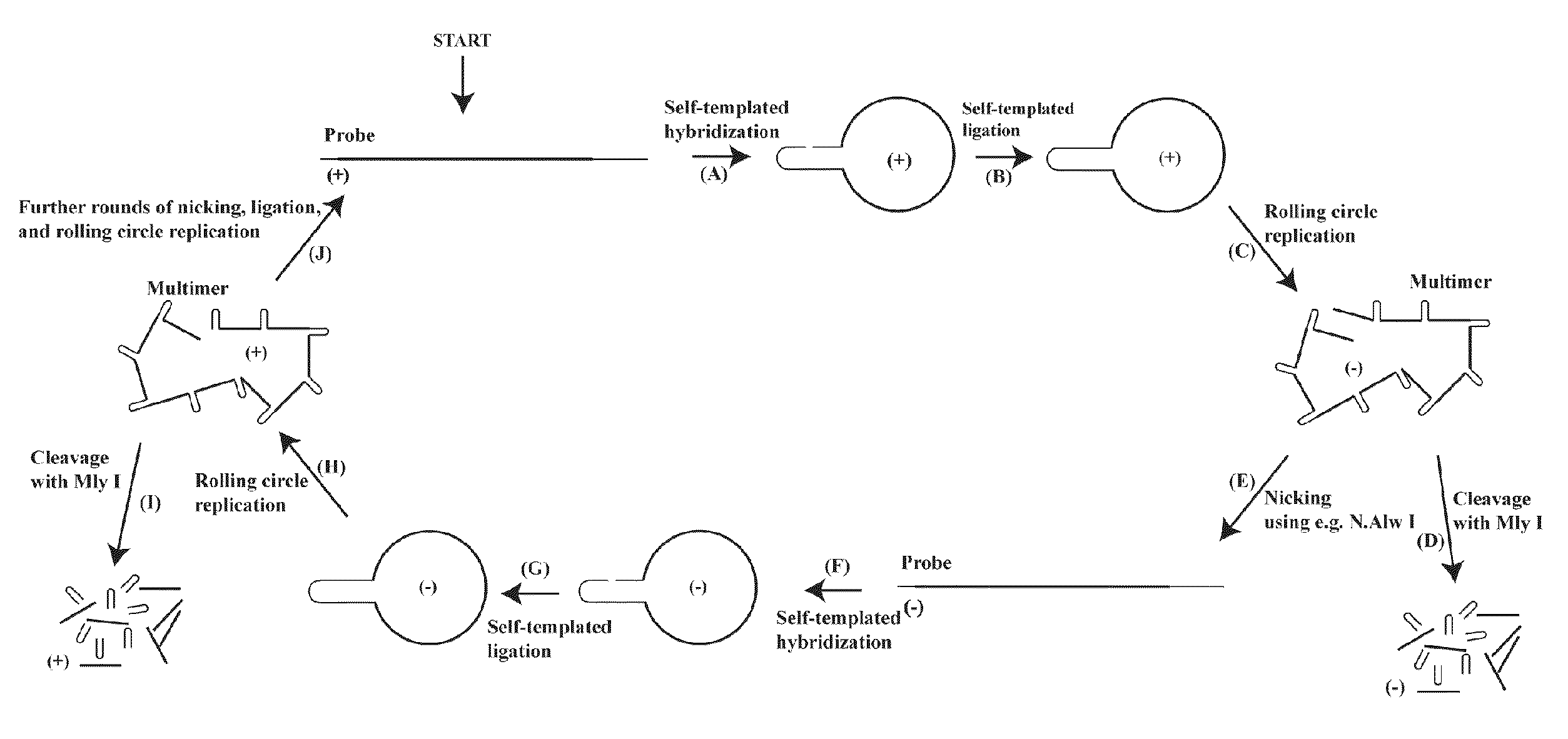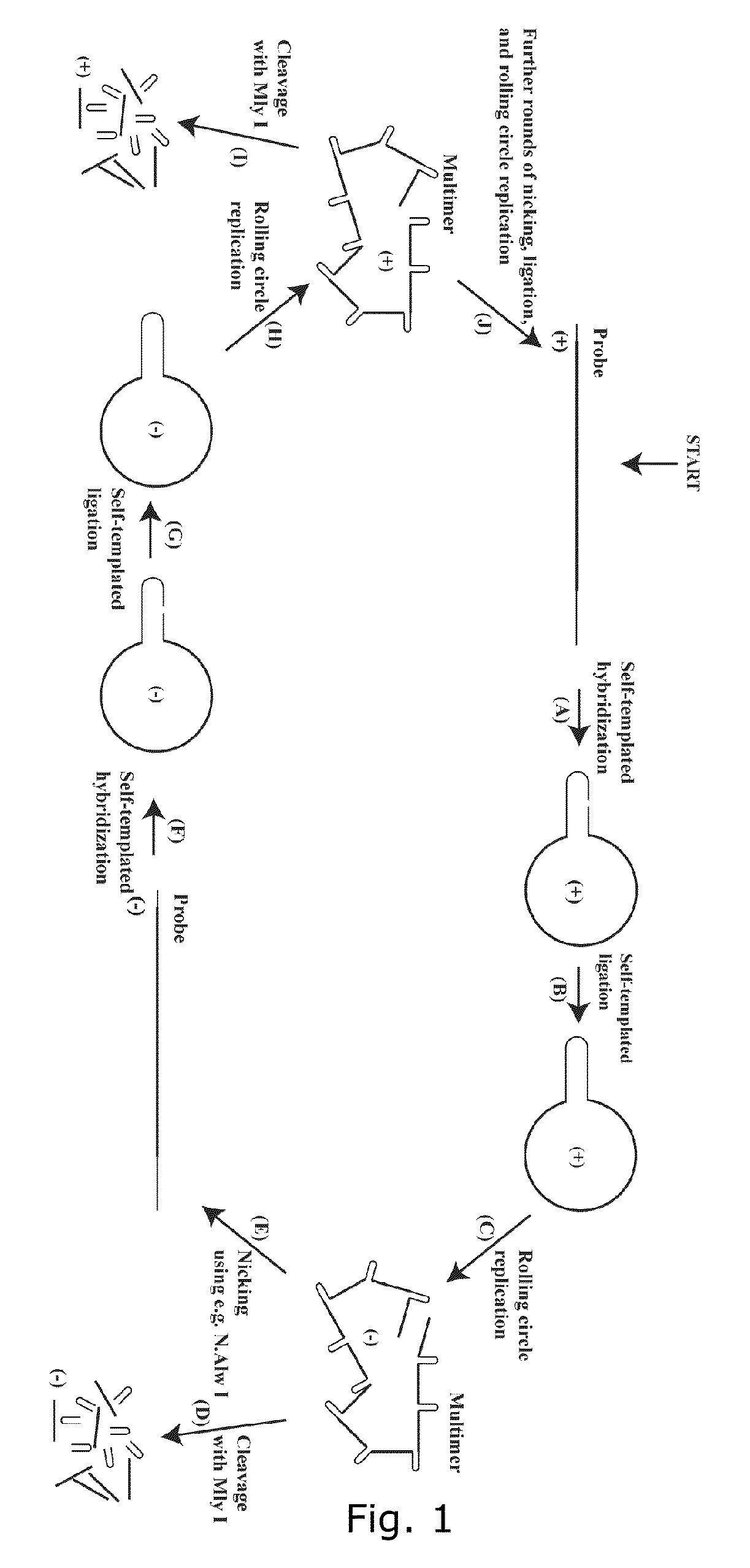Methods for production of oligonucleotides
a technology of oligonucleotides and oligonucleotide, which is applied in the field of oligonucleotide production methods, can solve the problems of insufficient the inability to provide free design of the end of the dna sequence to be amplified, and the limitations of all these techniques
- Summary
- Abstract
- Description
- Claims
- Application Information
AI Technical Summary
Benefits of technology
Problems solved by technology
Method used
Image
Examples
example 1
[0339]Amplification of the 66 Nucleotides Oligonucleotide SF86-SC by the Use of a Suicide Cassette
[0340]By the use of the invention we were able to amplify an oligonucleotide approximately 100,000 fold. The invention uses a suicide cassette as a tool to amplify the specified oligonucleotide. A suicide cassette is a hairpin structure containing a binding site for a nicking enzyme and a restriction enzyme; in this example N.Alw I (Nt.Alw I) and Mly I respectively (FIG. 3, A-B). By having the suicide cassette positioned at each end of the originally synthesized oligonucleotide it is possible, by self-templated ligation, to turn the linear DNA sequence into a closed circular one. By successive rounds of rolling circle replication, nicking and ligation, the oligonucleotide can be amplified with either polarity. In the last step the suicide cassette can be separated from the oligonucleotide by restriction cleavage with Mly I (FIG. 1).
Oligonucleotide to be Amplified+Suicide Cassette (SF86)...
PUM
| Property | Measurement | Unit |
|---|---|---|
| concentration | aaaaa | aaaaa |
| incubation time | aaaaa | aaaaa |
| incubation time | aaaaa | aaaaa |
Abstract
Description
Claims
Application Information
 Login to View More
Login to View More - R&D
- Intellectual Property
- Life Sciences
- Materials
- Tech Scout
- Unparalleled Data Quality
- Higher Quality Content
- 60% Fewer Hallucinations
Browse by: Latest US Patents, China's latest patents, Technical Efficacy Thesaurus, Application Domain, Technology Topic, Popular Technical Reports.
© 2025 PatSnap. All rights reserved.Legal|Privacy policy|Modern Slavery Act Transparency Statement|Sitemap|About US| Contact US: help@patsnap.com



